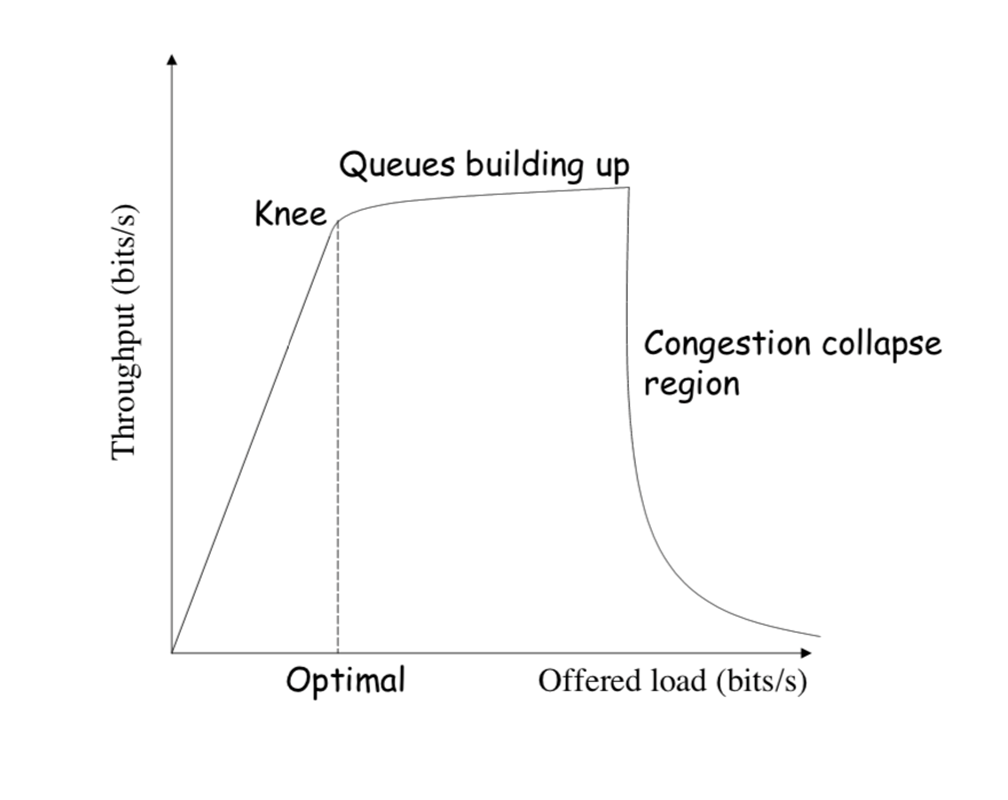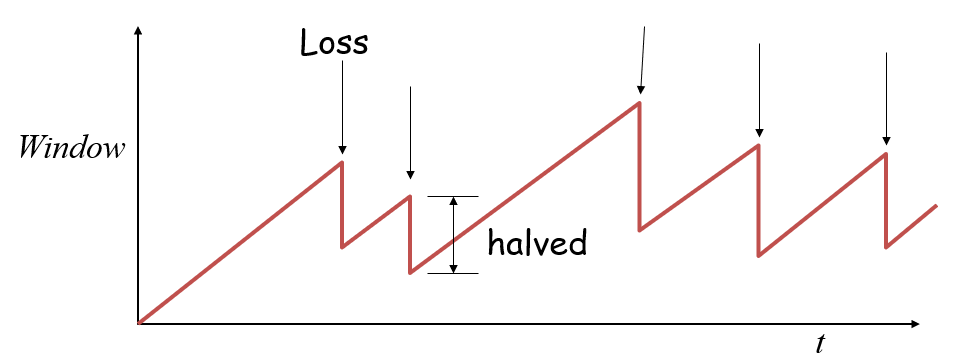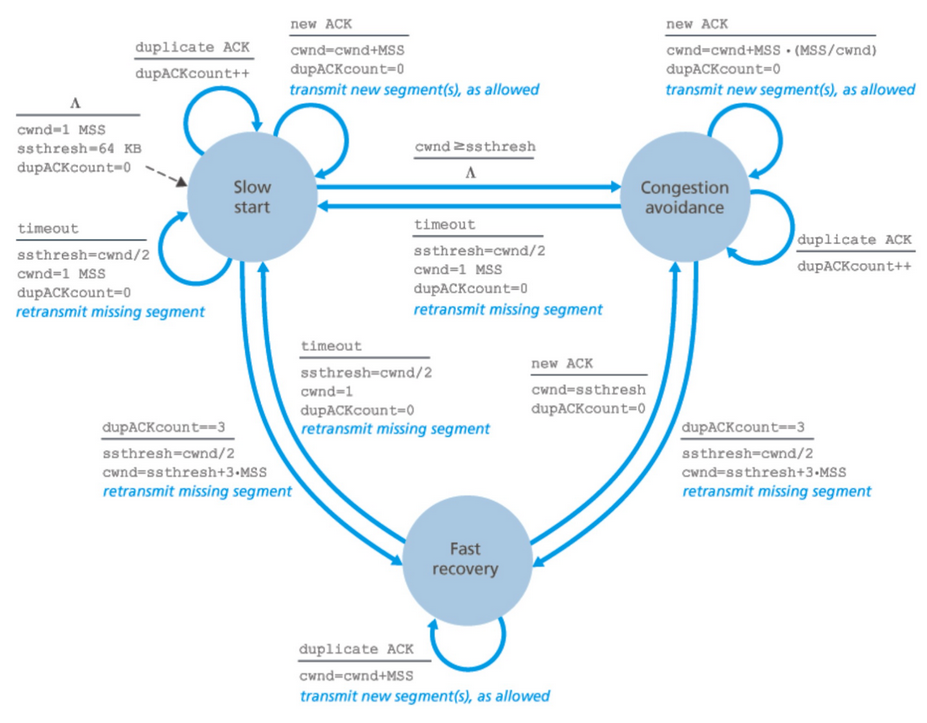Flows contend for two resources
- Link bandwidth
- Queue space
Leads to congestion
A network is considered congested if contention for resources leads toward queue build-ups and packet drops
- Best-effort network does not “block” calls
- So they can easily become overloaded
- Congestion == load higher than capacity
- Examples of congestion
- Link layer: Ethernet frame collisions
- Network layer: full IP packet buffers
- Excess packets are dropped
- And sender retransmits
Throughput vs Load:

Congestion collapse
Too much throughput easily leads to congestion collapse
- Senders retransmit lost packets
- Leading to an even greater load and even more packet loss
Detecting congestion
- Link layer
- Carrier sense multiple access
- Seeing your own frame collide with others
- Network layer
- Observe end-to-end performance
- Packet delay or loss over the path
How TCP detects packet losses:
- Duplicate ACKs
- Packet N is lost, but packets N+1, N+2, etc. are received and ACKs are sent
- Timeout
- Packet N is lost and detected via a timeout
Responding to congestion
- Upon detecting congestion
- Decrease sending rate
- But if more bandwidth becomes available, you don’t want to continue sending at low rate
- Upon not detecting congestion
- Increase sending rate, a little at a time
- See if packets get through
TCP congestion control
- ACK works as the indicator and the window controls the flow
- Congestion_window: calculated by sender
- Additive increase, multiplicative decrease (AIMD)
- On packet loss, divide congestion window in half
- Exponential decrease because:
- Congestion is very bad, need to react aggressively
- Nice theoretical properties, makes efficient use of network resources
- Exponential decrease because:
- On success for last window, increase window linearly
- On packet loss, divide congestion window in half

Congestion window
- Each TCP sender maintains congestion window (CWND)
- Max number of bytes to have in transit (not yet ACK’d)
- Adapting the congestion window
- Decrease upon losing a packet
- Increase upon success: optimistically exploring
- Always looking for right transfer rate
- Pro: avoids explicit network feedback
- Con: constantly over- and under-shoots “right” rate
Difference between advertised window and congestion window
- Flow control keeps a fast sender from overwhelming a slow receiver
- Congestion control keeps a set of senders from overloading the network
- Different concepts, but similar mechanisms
- Sender TCP window =
min(congestion_window, receiver_window)
- Sender TCP window =
Note
Conservation of packets: If the connection is running at available capacity (bandwidth) then a packet is not injected into the network unless a packet is taken out.
Implementation Details
Update time: per RTT vs per ACK
- Double CWND per round-trip time
- Implemented as CWND = CWND + 1 (per ACK)
- Linear increase of CWND per round-trip time
- Implemented as CWND = CWND + 1/CWND (per ACK)
FSM Diagram
TCP Congestion Control summarized as a finite state machine:
